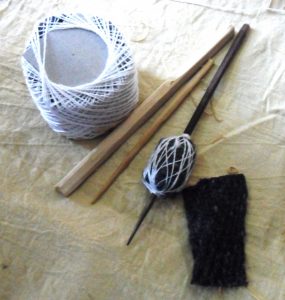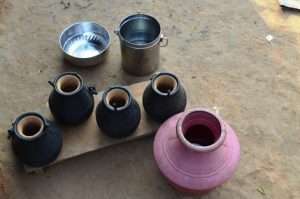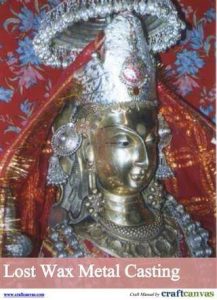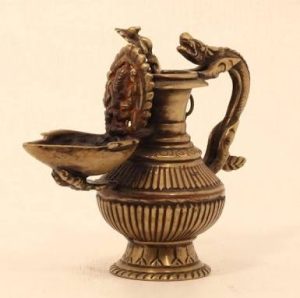Srikalahasti Kalamkari
One of the most ancient arts in INDIA originated about 3000 years is Srikalahasti Kalamkari. The word kalamkari is derived from the words kalam and Kari. Kalam means pen with which the drawings are drawn, and Kari means craftsmanship.
Kalamkari involves seventeen steps and only natural dyes are used in it. This art form is used to describe the events of HINDU mythology on the fabrics. In the past, this art is done only on cotton textile. But nowadays this has been extended to all types of fabrics, wall paintings, dupattas, pillow cushions, etc.
Details : Srikalahasti Kalamkari
- History
- TYPES
- PROCESS
- TRADE
- GOVERNMENT AID
- VENDOR
History of Srikalahasti Kalamkari
In the ancient India singers, dancers and painters called chitrakattis moved from village to village to tell the village dwellers about the Hindu mythology.
At that time, they used the dyes extracted from plants and drew them with simple means. This art form found its peak in GOLCONDA sultanate, Hyderabad.
The Mughals who patronized this art in Golconda province called it as ‘qualamkari’ and later called as ‘Kalamkari’. Kalamkari has been practiced by many families in Andhra Pradesh from over many generations and constituted their livelihood.
Types Of Srikalahasti Kalamkari art
In India, there are two distinct styles of Kalamkari. They are the Srikalahasti style and the Machilipatnam style. The Srikalahasti style kalamkari is made by using a pen (kalam) for a freehand drawing of the subject and filling in the colours.
This is entirely handwork. Whereas the Machilipatnam style is made at Pedana near Machilipatnam in Andhra Pradesh. This art is influenced by Persian art and involves patronage of Mughal and Golconda sultanate.
SRIKALAHASTI KALAMKARI
The kalamkari artists make use special pens which are particularly crafted for this purpose from the bamboo tree.
Once the textile is ready after the weaving process the fabric is mixed with a blend of milk and natural dyes and then the required design is done with the help of the special pen. The outcome of the paintings of kalamkari is very detailed and complicated.

Pen Kalamkari
Kalamkari block
Block printing
Process in Srikalahasti Kalamkari art
Both the Srikalahasti and Machilipatnam style of kalamkari varies slightly in its processing however for both the techniques and the materials used is the same. In Srikalahasti, the cotton cloth is washed thoroughly with water to remove any dirt or grease in it for effective painting.
Then it is sun-dried and when it is dry it is once again soaked for few minutes in buffalo milk mixed with myrobalan fruit dust. This is once again followed by drying after squeezing out. Then the tamarind tree twig is used as a charcoal pencil to draw the initial drawing.
Then a pen trimmed down to get a sharp tip is made from the bamboo stick is got ready. A cotton cloth is taken and tied at the sharp tip of the pen using a thread.
The outline of the painting or the drawing is drawn from a solution called as kais which is got by mixing 500gms of sugarcane jaggery, 100gms of palm jaggery and 1kg of rusted iron in 10 liters of water.

Instruments used in kalamkari
Dye used for kalamkari
Trade of Srikalahasti Kalamkari
In ancient, the kalamkari works are also used for trading. As more amount of water is used for kalamkari Srikalahasti has become a major center for kalamkari as it has required an amount of water from rivers.
From ancient times itself, kalamkari has a great demand in other countries and are exported to other countries like England, USA, Europe. Kalamkari was used as a currency for trading spices in olden days.
Govenment Aid of Srikalahasti Kalamkari
The government of Andhra Pradesh helps to preserve the art by recognizing the kalamkari stores. The registration of kalamkari art helps the craftsman to fight legally if the art or design is copied in any form.
Vendor of Srikalahasti Kalamkari Art in india
Niranjan Jonnalagadda is a kalamkari vendor living in Srikalahasti and is a manufacturer kalamkari products. There are nearly 60 members working under him and manufactures canvas painting, dupattas, sarees, cushions. Since five generations his family is in this occupation.
He exports the products to other states and other countries as well. Not only manufacturing but he also conducts workshops on block printing, kalamkari in his office and in various colleges.
They also have a website www.kalamkari.org where they exhibit all their products and their work.
REFERENCES
- https://www.utsavpedia.com/motifs-embroideries/kalamkari-art/
- https://en.wikipedia.org/wiki/Kalamkari
- http://www.indianmirror.com/culture/indian-specialties/kalamkariwork.html
- www.kalamkari.org






